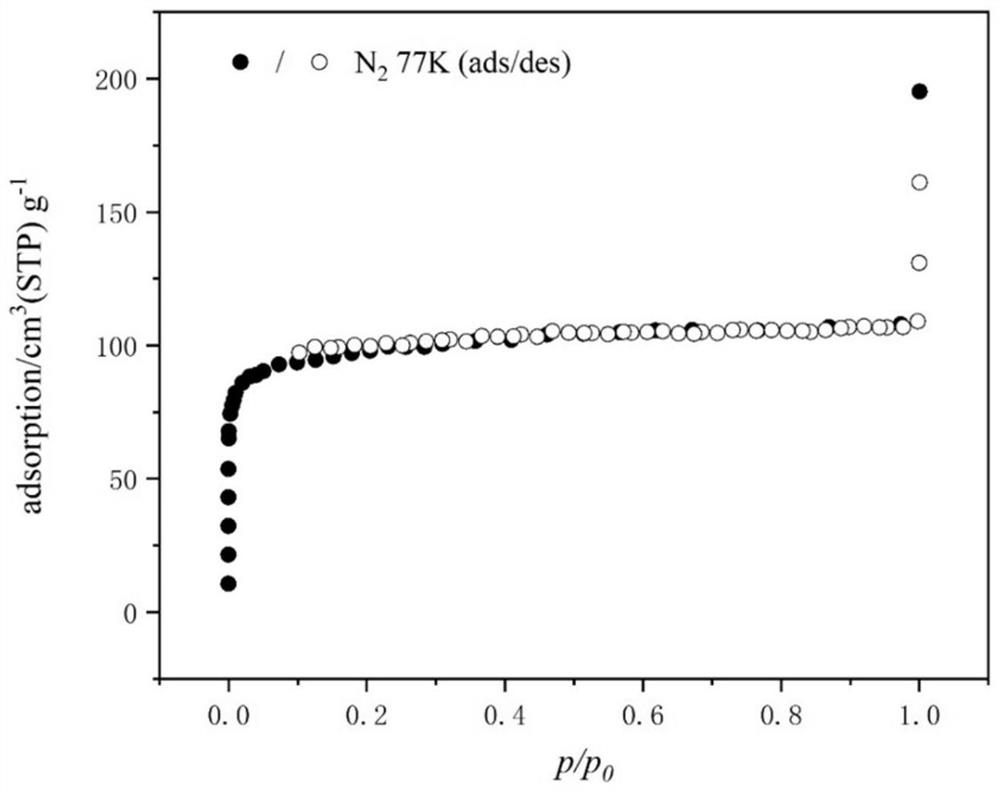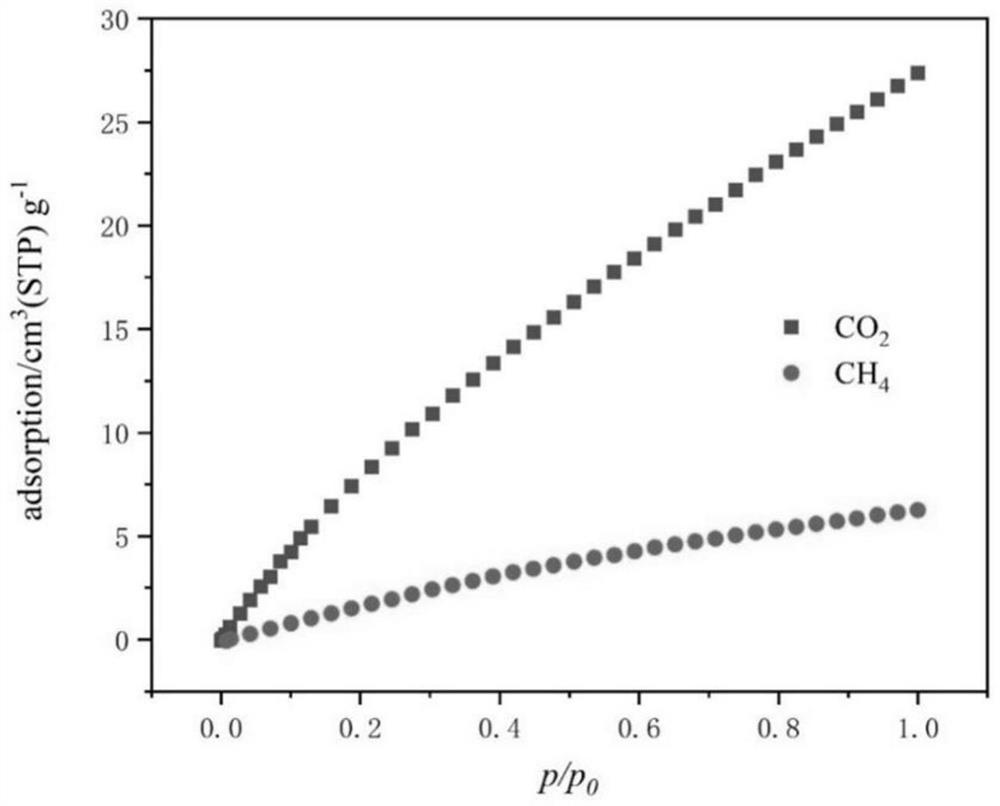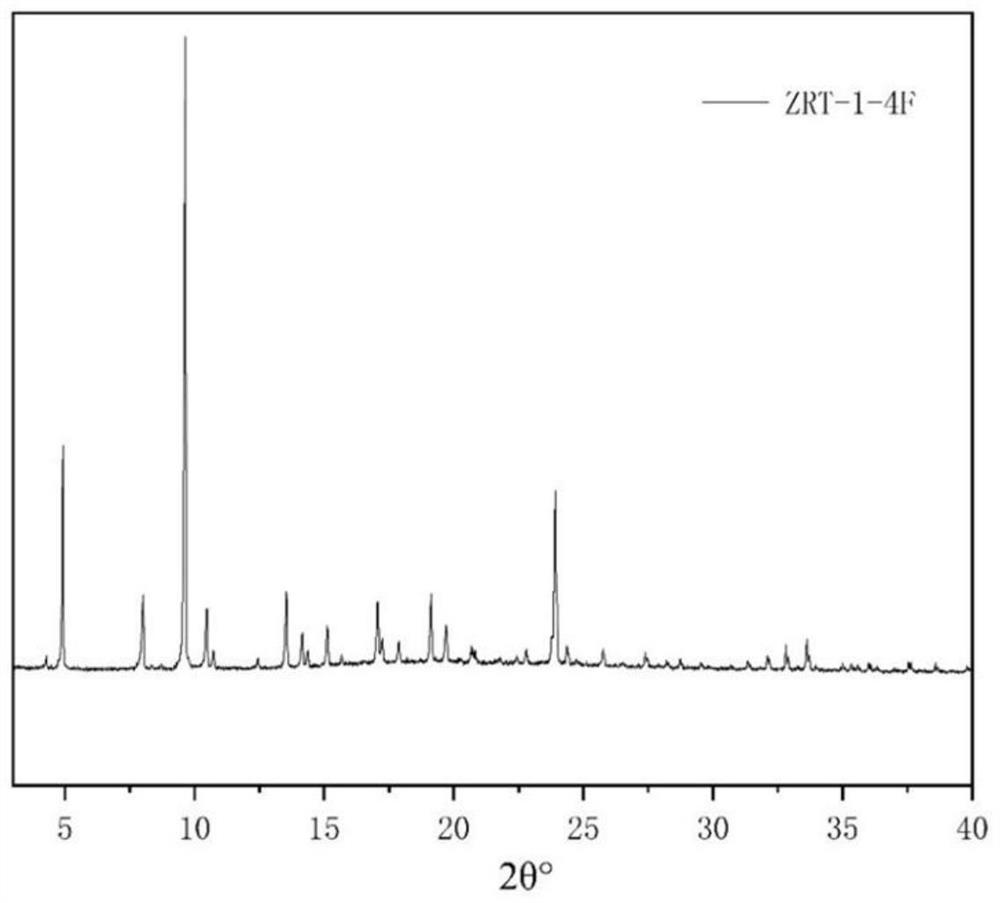A kind of mixed matrix membrane and its preparation method and application
A mixed matrix membrane and mixed dissolution technology, which is applied in the field of material science and gas separation, can solve the problems of reducing the amount of metal-organic framework materials, limiting the wide application of mixed matrix membranes, and irregular morphology, so as to avoid interface defects problems, overcoming interface defects, and ease of industrial application
- Summary
- Abstract
- Description
- Claims
- Application Information
AI Technical Summary
Problems solved by technology
Method used
Image
Examples
Embodiment 1
[0034] Example 1 Preparation of Porous Metal-Organic Cage Complex ZRT-1-4F
[0035] Mix 7.5 g of zirconocene, 2.5 g of tetrafluoroterephthalic acid with 50 mL of N,N-dimethylacetamide (DMA), and sonicate until dissolved; then add 10 mL of water, and sonicate until mixed to obtain a reaction solution; then put The reaction was carried out in an oven at 65°C for 8 hours. After the reaction was completed, the reaction solution was cooled and centrifuged (a large amount of white powder was formed during the reaction), and the obtained solid was washed three times with N,N-diethylformamide (DEF) and dichloromethane in turn. , and finally dried under vacuum at 65 °C to obtain the porous metal-organic cage complex ZRT-1-4F.
[0036] Result: N of the porous metal-organic cage complex ZRT-1-4F prepared in this example at 77K 2 Adsorption diagram such as figure 1 shown; by figure 1 It can be seen that the prepared ZRT-1-4F has a microporous structure.
[0037] CO of the porous metal...
Embodiment 2
[0039] Example 2 Preparation of Porous Metal-Organic Cage Complex ZRT-1-4F
[0040] Mix 7.5 g of zirconocene, 2.5 g of tetrafluoroterephthalic acid with 50 mL of N,N-dimethylacetamide (DMA), and sonicate until dissolved; then add 10 mL of water, and sonicate until mixed to obtain a reaction solution; then put The reaction was carried out in an oven at 55°C for 12 hours. After the reaction was completed, the reaction solution was cooled and centrifuged (a large amount of white powder was formed during the reaction), and the obtained solid was washed three times with N,N-diethylformamide (DEF) and dichloromethane in turn. , and finally dried under vacuum at 65 °C to obtain the porous metal-organic cage complex ZRT-1-4F.
Embodiment 3
[0041] Example 3 Preparation of Porous Metal-Organic Cage Complex ZRT-1-4F
[0042] Mix 7.5 g of zirconocene, 2.5 g of tetrafluoroterephthalic acid with 50 mL of N,N-dimethylacetamide (DMA), and sonicate until dissolved; then add 10 mL of water, and sonicate until mixed to obtain a reaction solution; then put The reaction was carried out in an oven at 85°C for 9 hours. After the reaction was completed, the reaction solution was cooled and centrifuged (a large amount of white powder was formed during the reaction), and the obtained solid was washed three times with N,N-diethylformamide (DEF) and dichloromethane in turn. , and finally dried under vacuum at 65 °C to obtain the porous metal-organic cage complex ZRT-1-4F.
PUM
| Property | Measurement | Unit |
|---|---|---|
| osmotic coefficient | aaaaa | aaaaa |
| osmotic coefficient | aaaaa | aaaaa |
| osmotic coefficient | aaaaa | aaaaa |
Abstract
Description
Claims
Application Information
 Login to View More
Login to View More - R&D
- Intellectual Property
- Life Sciences
- Materials
- Tech Scout
- Unparalleled Data Quality
- Higher Quality Content
- 60% Fewer Hallucinations
Browse by: Latest US Patents, China's latest patents, Technical Efficacy Thesaurus, Application Domain, Technology Topic, Popular Technical Reports.
© 2025 PatSnap. All rights reserved.Legal|Privacy policy|Modern Slavery Act Transparency Statement|Sitemap|About US| Contact US: help@patsnap.com



